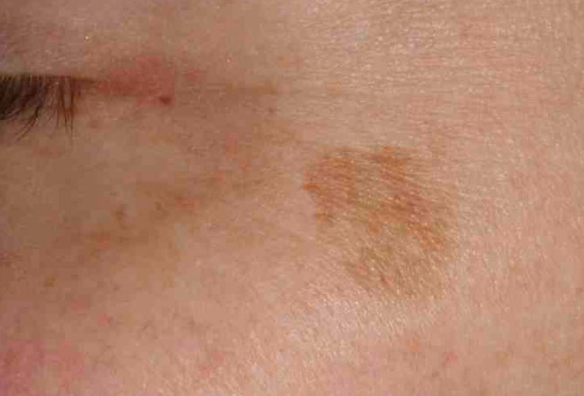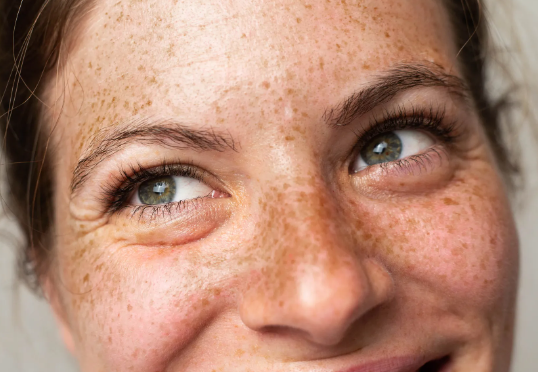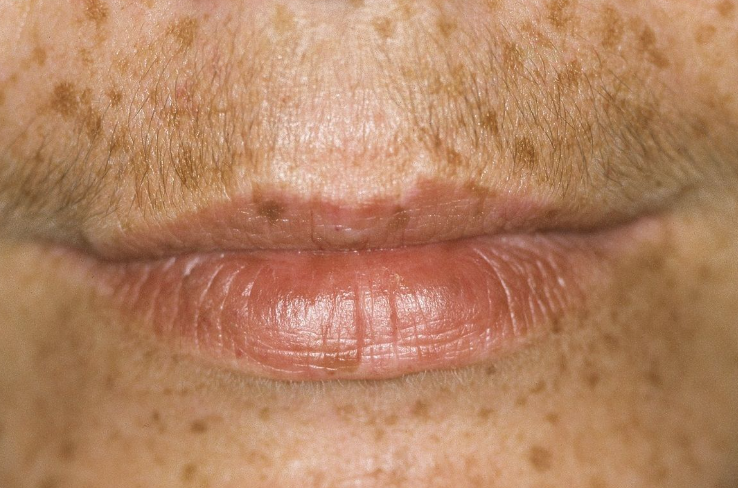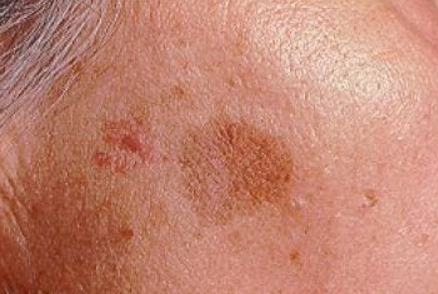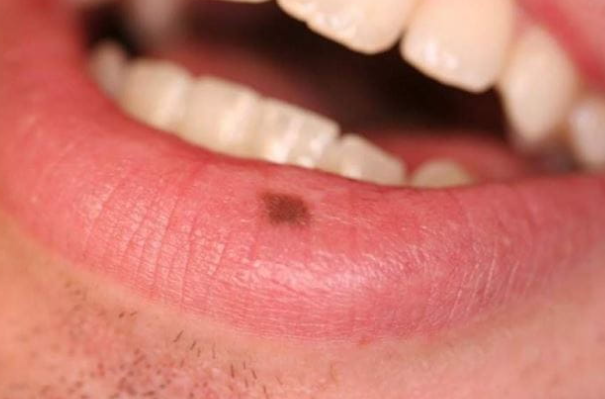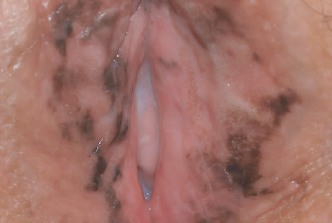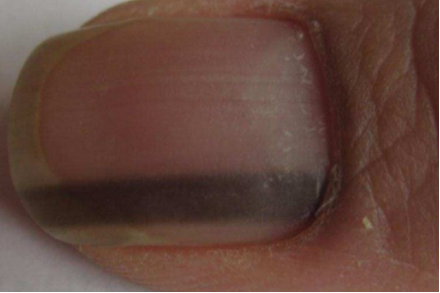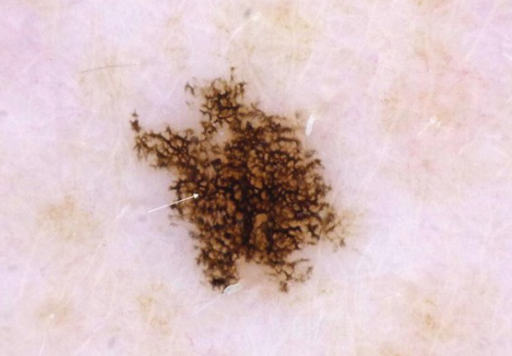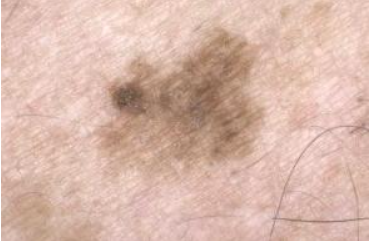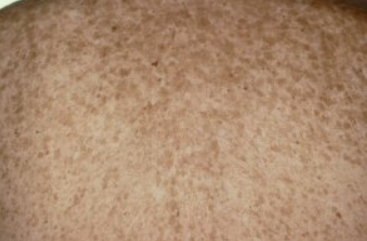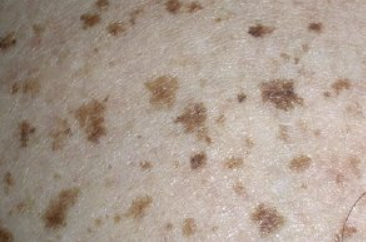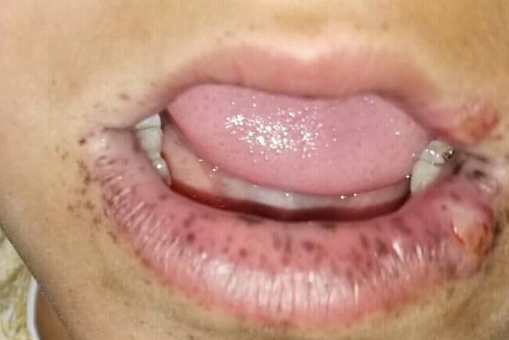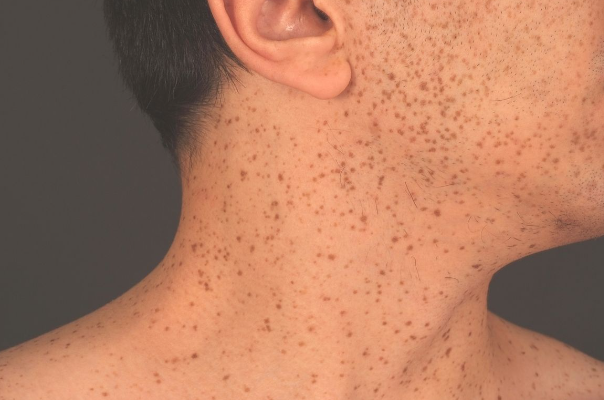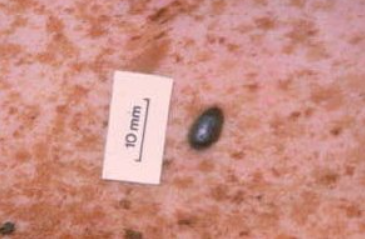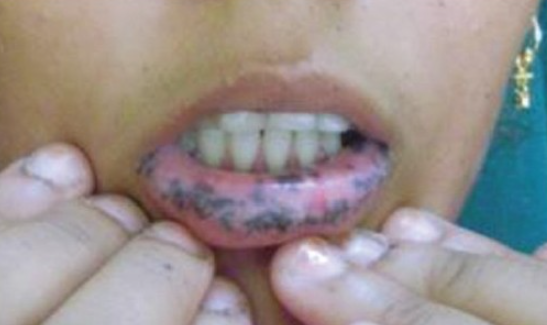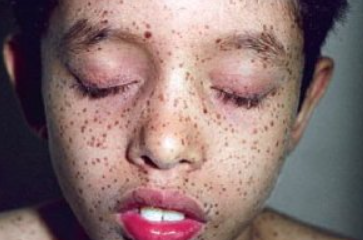Lentigo - solitary or widespread benign pigmented spots that develop on sun-exposed areas of the skin. ICD-10 code: L81.4
There are three types of localized hyperpigmentation: freckles (ephelides), juvenile lentigo, and solar lentigo. All three types of spots are similar in size, distribution, and clinical appearance. They differ in the age of onset, clinical course, and response to light exposure.
Freckles appear in childhood and are inherited in an autosomal dominant manner. They are typically localized on the skin of the face, hands, and upper trunk. Their number increases and their color darkens in response to sun exposure. Without sun exposure, freckles become lighter. During winter, they often completely disappear. Juvenile lentigo is very common among individuals of white ethnicity.
Juvenile lentigo appears in childhood, and the average number in a prepubescent child is around 30. These spots do not increase in number or size and do not darken upon sun exposure. Juvenile lentigo can also be a characteristic feature of certain inherited syndromes.
Solar lentigo is most often found on sun-exposed areas of the skin in individuals of Caucasian ethnicity. With age, their number and size increase. Approximately 75% of Caucasians over the age of 60 have one or more spots. These spots develop in response to actinic damage.
Freckles (ephelides)
Juvenile Lentigo (Lentigo Simplex)
Solar Lentigo
Labial Melanotic Macule
Penile Lentiginosis
Vulvar Lentigo (Vulvar Melanosis)
Nail Lentigo
Reticulate Black Solar Lentigo (Ink-Spot Lentigo)
Atypical Solar Lentigo
Multiple Lentigines (Lentiginosis)
PUVA-Induced Lentigines
Peutz-Jeghers Syndrome
LEOPARD Syndrome (Noonan syndrome with multiple lentigines)
Carney Complex
Cronkhite-Canada Syndrome
Laugier-Hunziker Syndrome
Cantu Syndrome
Bannayan-Riley-Ruvalcaba Syndrome
Centrofacial Lentiginosis
Diagnosis is usually based on clinical presentation, history, and dermoscopy.
Any lentigo with highly irregular borders or localized pigmentary increase or thickening should be biopsied to rule out melanoma and malignant lentigo.- Seborrheic keratosis
- Pigmented actinic keratosis
- Lentigo Maligna
- Melanoma
- In case of multiple lentigines, an associated syndrome can be suspected, such as Peutz-Jeghers syndrome, LEOPARD syndrome, or NAME syndrome (LAMB).
- Café-au-lait spots
- Melanocytic nevus
- Melasma
- Freckles do not require treatment and fade during the winter months.
- Sunscreens prevent the appearance of new freckles and their seasonal darkening.
- Juvenile lentigo also does not require treatment.
- Prevention of solar lentigo is best achieved through sun protection measures, such as avoiding sun exposure, wearing hats, protective clothing, and using sunscreen.
- Hydroquinone solutions, tretinoin, azelaic acid creams, and glycolic acid peels reduce hyperpigmentation over weeks and months.
- Superficial cryosurgery shows the effectiveness

